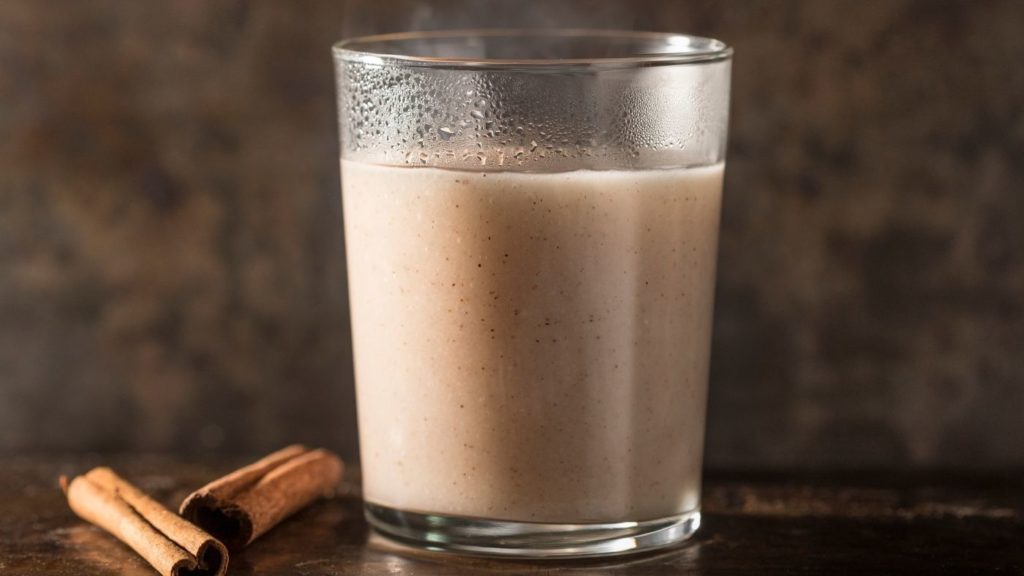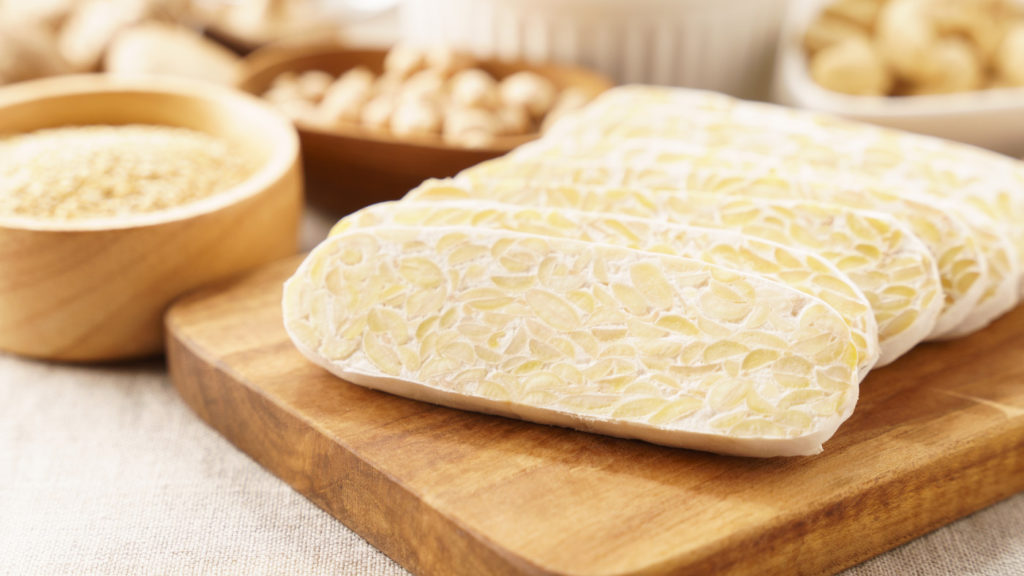Make your own natural sourdough starter at home and learn how to maintain it with the best sourdough starter recipe!
Sourdough starter is a mixture of flour and water that hosts good bacteria and wild yeast. Traditionally, bread was made with sourdough.
This article will guide you in the choice of ingredients and the technique to make and feed your own sourdough starter in your kitchen!
Go straight to the section that interests you:
- Where Does Sourdough Come From?
- Sourdough Starter Ingredients
- Sourdough Starter Recipe
- How to Use and Feed Sourdough Starter
- FAQ
Where Does Sourdough Come From?
Sourdough has been used since the very beginning of humanity. Before the use of yeast, bread, buns, and other baked goods were all made with sourdough!
Visually, sourdough looks like a thick pancake batter, often full of bubbles. Sourdough has only two ingredients: flour and water.
What makes sourdough magical is the colony of microorganisms that inhabit it. Flour and water create the perfect environment for the development of yeast and good bacteria. It’s like having a small active city in a jar!
When sourdough is added to flour and water, microorganisms ferment and raise the dough. It is through this fermentation that bread develops its flavour and volume. Without fermentation, you would only get flat and tasteless bread!
Bread made with sourdough is more digestible and often has a more acidic taste due to the long fermentation. It also keeps longer.
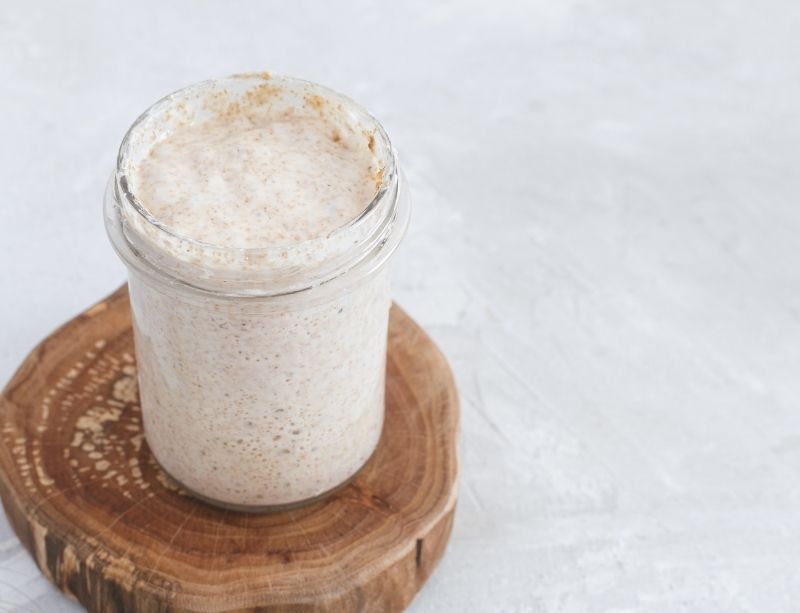
Sourdough Starter Ingredients
Basic sourdough contains two ingredients: flour and water. This mixture will feed the yeast and bacteria in the sourdough.
Which Flour to Use for Sourdough?
Any flour can be used to make sourdough.
Rye and whole wheat flour are the most common choices.
You can also use gluten-free flours, such as buckwheat or brown rice flour.
If possible, use whole grain and organic flours. They create a better environment for microorganisms.
What Water to Use for Sourdough?
Filtered and dechlorinated water are the best options for making sourdough at home.
For more information, see Which Water to Use for My Fermentations?
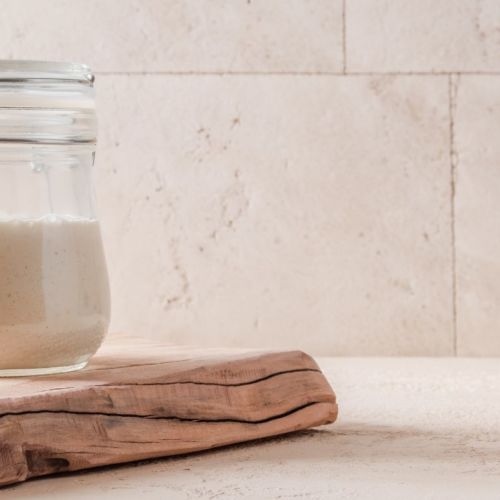
Homemade Sourdough Recipe
Equipment
- 1 kitchen scale
- Spoon or mixing tools
Ingredients
First day
- 50 g flour
- 50 g water
Following days
- 25 g flour
- 25 g water
Steps
Day 1
- Place the glass jar on the scale and set the scale to zero.
- Pour the water into the jar until you reach 50g.
- Add 50g of flour.
- Mix flour and water.
- Using a rubber band, mark the height of the mixture to observe the growth of the sourdough.
- Close the jar and leave it in a warm place for 24 hours.
Day 2
- Stir with a spoon, then discard half the sourdough.
- Add 25g flour and 25g water to the jar. Mix well with the remaining sourdough. This step is called a "feeding".
- Close the jar and let it rest again in a warm place for 24 hours.
Day 3 and following days
- Each day, repeat day 2 steps.
- Monitor the growth of the sourdough every day. With consecutive feedings, a colony of yeast and bacteria will settle in the mixture, where bubbles will appear, and a tangy smell will develop.
- When the sourdough doubles in volume over 12 hours for two consecutive days, it is ready to be used for making bread.
Maintaining sourdough
- The best way to maintain your sourdough is to do regular feeding. Feedings every 24 hours usually give good results.
Notes
You can use the sourdough "discard" in your pancake, bread, and muffin recipes.
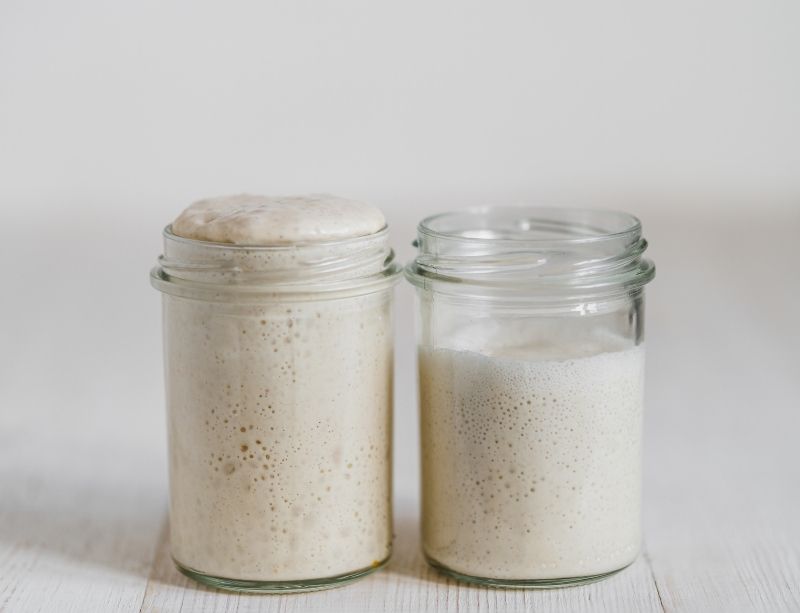
When Is My Sourdough Ready to Be Used?
Sourdough is active and ready to make bread when it doubles in volume within 12 hours for two consecutive days.
5 to 7 days should be enough to make sourdough. But remember that sourdough generally improves with time, as only the best organisms survive and reproduce.
It is ready to use when it reaches its peak volume and small bubbles appear on the surface. Collect it before it starts to collapse.
How to Use and Feed Your Sourdough
Congratulations, your sourdough is alive! You can now use it in your recipes for bread, buns, pizza, etc.
However, now that your sourdough is active, you need to learn how to use and maintain it!
By making periodic feeding, you can keep your sourdough for several years.
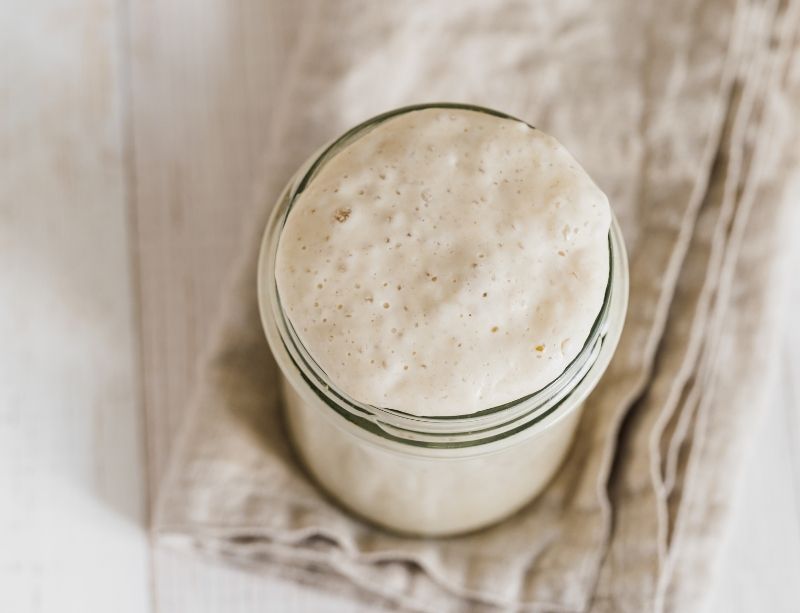
How Much Sourdough Starter to Make Bread?
Sourdough bread recipes vary greatly. As a general rule, you need between 20% and 30% of the weight of the flour in sourdough.
For example, if you have a bread recipe that calls for 500g of flour, you will need to use between 100g and 150g of liquid sourdough.
For more accuracy, we recommend that you always measure the ingredients by weight, using a kitchen scale. Sourdough contains bubbles and air, which can alter its volume.
How to Use Sourdough Starter to Make Bread?
If you want to make bread, don’t use all your sourdough!
The basic sourdough is called “chef’s sourdough”. Always keep some chef’s sourdough in reserve, and only use a small part of it to make bread.
This way, you can keep the chef’s sourdough forever by doing regular feeding.
For example, if you have 100g of chef’s sourdough, take half of it (50g) to make bread.
Keep your chef’s sourdough by adding 25g of flour and 25g of water, that is by doing feeding.
How to Store Your Sourdough Starter
To keep your chef’s sourdough strong, it is recommended to feed it every day. But sourdough is a resilient beast. Don’t panic if you forget to feed it a day or two!
To take a break, store your sourdough in the fridge between feedings. It will last for several weeks.
Sourdough can also be kept in the freezer for a few months.
After a period in the fridge, make sure you do at least one feeding before using your sourdough to make bread.
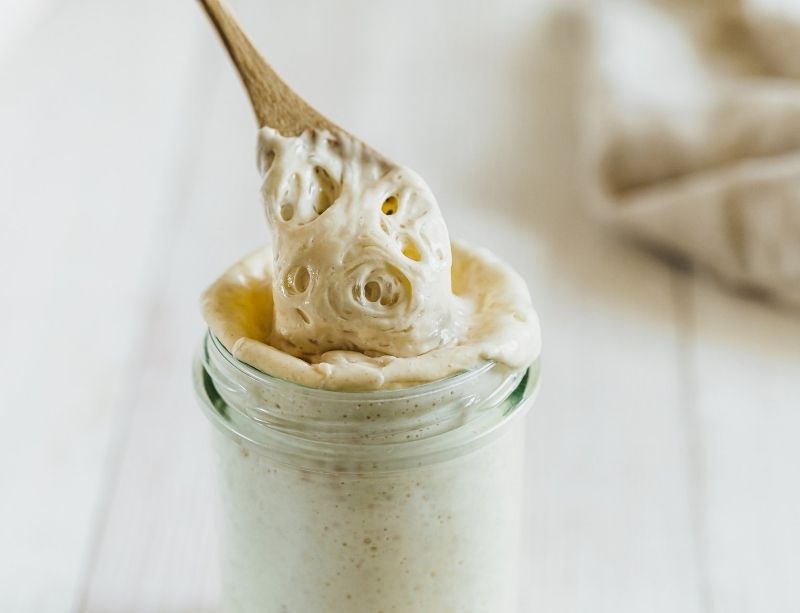
FAQ About Sourdough
Why Discard Half the Sourdough During a Feeding?
To do a feeding, you need to mix the same amount of sourdough as flour and water. This technique always doubles the initial quantity of sourdough.
To avoid ending up with several litres of sourdough, half of the sourdough is always removed and replaced by flour and water. This way, you always keep the same amount of chef’s sourdough.
Why Is My Sourdough Flat After Being Active for 3 Days?
This is perfectly normal, and you are on the right track!
The sourdough in the making goes through several microbiological stages. The microorganisms responsible for these initial outbreaks are only transitory and will soon be replaced by other yeast and bacteria that are more stable.
A stable and balanced colony may take up to two weeks of daily feedings before it is well established. Keep at it!
Solution: Continue the daily feedings until the sourdough regularly doubles in volume.
Why Does My Sourdough Smell Like Alcohol or Nail Polish?
Sourdough can have a strong smell of paint remover, alcohol, or nail varnish when it is hungry. This is normal.
Solution: Make a fresh batch as soon as possible.
Why Has My Sourdough Split Into 2 Layers?
When resting in the fridge, water can separate from the sourdough. It may have a grey or brown colour, but this is perfectly normal.
Solution: Drain the water or re-mix it with the sourdough, then do a feeding.
What if There Is Black Mould on My Sourdough?
Although it is very rare, sourdough left in the bottom of the fridge can develop mould. This is a sign that the colony of microorganisms is weakened and contaminated.
Solution: Discard it all out and start over. Sorry!
What to Do With Discard Sourdough?
Instead of throwing away your sourdough discard, incorporate them into homemade muffins, pancakes, crackers, etc.
You could also start another sourdough recipe to test different flours or methods, then compare with your first recipe.
